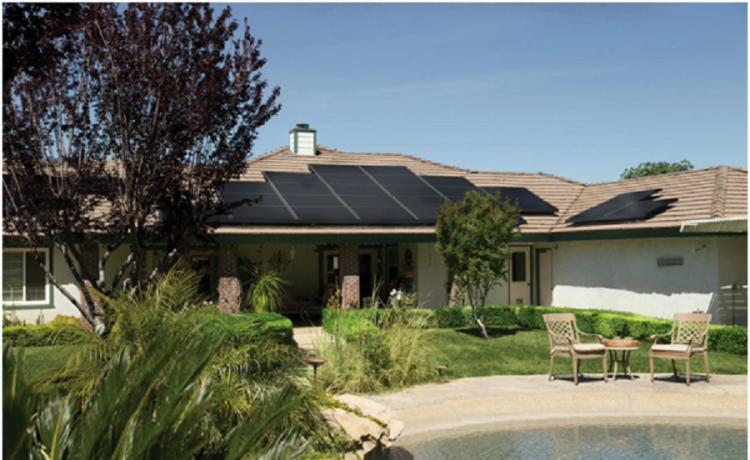We all have our moment in the sun. But it’s now time to celebrate the sun.
Nearly 250,000 Americans work in the solar industry. They have manufactured and installed enough panels to power 12 million homes. These numbers are expected to grow as the years go on.
Solar power is safe, affordable, and effective. Many people know these traits, and they think that solar power is Space Age technology. But it actually has its roots in the Stone Age.
Not convinced? Here is a brief history of solar energy.
The Early Years
As early as the 7th century BCE, human beings used sunlight to start fires. They took magnifying glasses that reflected the sun’s rays onto a single point. Greeks and Romans in the 3rd century BCE used mirrors to light torches for religious ceremonies.
The earliest “sunrooms” appeared in the Roman Empire. Architects built rooms with south-facing windows, allowing the sunlight to heat the space. Sunrooms today use the same principle, facing south to allow sunlight to enter and warm the home.
Photovoltaic cells began with Alexandre-Edmond Becquerel, a French physicist. He wrote a paper in 1839 describing how a cell of metal electrodes made electricity when exposed to light. His paper was the first description of the photovoltaic effect, the process that a cell uses to convert sunlight into electricity.
Scientists in the following decades found more substances that could produce electric currents. In 1873, Willoughby Smith found that selenium functions as a conductor. Ten years later, Charles Fritz created the first solar cell with a selenium core.
But Fritz’s work did not become commonplace. Though selenium was conductive, it did not have high efficiency. More developments needed to take place before industries could rely on photovoltaic cells.
The Twentieth Century
Albert Einstein himself contributed the first major development to solar technology in the twentieth century. He wrote a paper in 1905 about light particles we now call “photons.” He observed that photons eject electrons.
In 1918, Polish scientist Jan Czochralski learned how to grow single crystals of silicon. Over the next thirty-five years, scientists experimented with crystals. They noted that photons easily ejected electrons in silicon, conducting electricity.
In 1954, scientists at the Bell Labs in New Jersey created the first photovoltaic cell with silicon. It reached 11 percent efficiency. This pales in comparison to modern cells, but it was enough to power small devices.
NASA contacted the Bell Labs to place solar cells on their satellites. In 1958, they launched the Vanguard I satellite with a one-watt panel to supply its radios with power. When that proved successful, they launched three more satellites that year with panels.
NASA’s backing encouraged labs across the country to experiment with panels. Over the 1960s, they managed to increase their efficiency to 14 percent.
Though this still wasn’t enough for commercial use, the government saw promise in them. The military funded research on the technology, allowing scientists to continue working.
The Government Pushes for Solar
The 1970s was a turning point for solar energy. Oil embargoes sent the price of gasoline skyrocketing. Without a reliable supply of cheap oil, the government turned to solar energy.
Congress passed several bills to provide affordable solar power. The Energy Tax Act of 1978 provided the first tax incentives for installing solar equipment. To promote solar technology, President Carter installed panels on the roof of the White House.
The government’s support for solar energy worked. In 1981, American inventor Paul MacCready built the Solar Challenger. It was the first aircraft to run on solar power, and he flew it across the English Channel.
Developers began attaching solar power systems to the electric grid in the 1990s. The Kerman Photovoltaic Power Plant in California was the first PV system to connect to the grid. The success of the plant led energy companies to start using solar power as a resource.
Into the 21st Century
The American government continues to pass bipartisan initiatives for solar power. In 2005, Congress passed the Energy Policy Act. This introduced a 30{7e0259aaa3060fed66852291a7d473d02e5444f60b251106bbd92dbe50858870} tax credit for solar energy systems.
Tax credits remain in effect today. You can receive a 22{7e0259aaa3060fed66852291a7d473d02e5444f60b251106bbd92dbe50858870} percent tax credit if you install a panel system in your home before the end of 2021.
Panels are also becoming more affordable. A panel today can cost as little as fifty cents per watt of energy. This has allowed millions of homeowners to install panels on their homes.
Over the last two decades, manufacturers have produced several kinds of panels. Thin-film panels are made from very thin pieces of silicon. They are flexible, allowing installers to place them on any kind of roof.
The efficiency of premium solar panels is close to 35 percent. Most panels on the market are lower, but they provide a constant flow of electricity. Even when it is cloudy, panels can use light to create energy.
Every major metropolitan area now has multiple installation companies. Some companies have grown so fast that they operate across the country. For example, Blue Raven Solar operates in fifteen states, including in major areas like Salt Lake City.
The Long History of Solar Energy
Solar panels are everywhere nowadays. Many people assume they’re a recent invention, but the history of solar energy runs deep.
In antiquity, human beings used the sun to light fires. This inspired scientists in the 19th century to examine how sunlight affects particles. Albert Einstein described the photoelectric effect, igniting further interest.
Inventors in the 1950s found that silicon could conduct electricity if struck with sunlight. Silicon solar cells followed. Government support in the 1970s led to a boom and solar cells are efficient today.
Science is rich with colorful characters. Follow our coverage for more educational guides.









